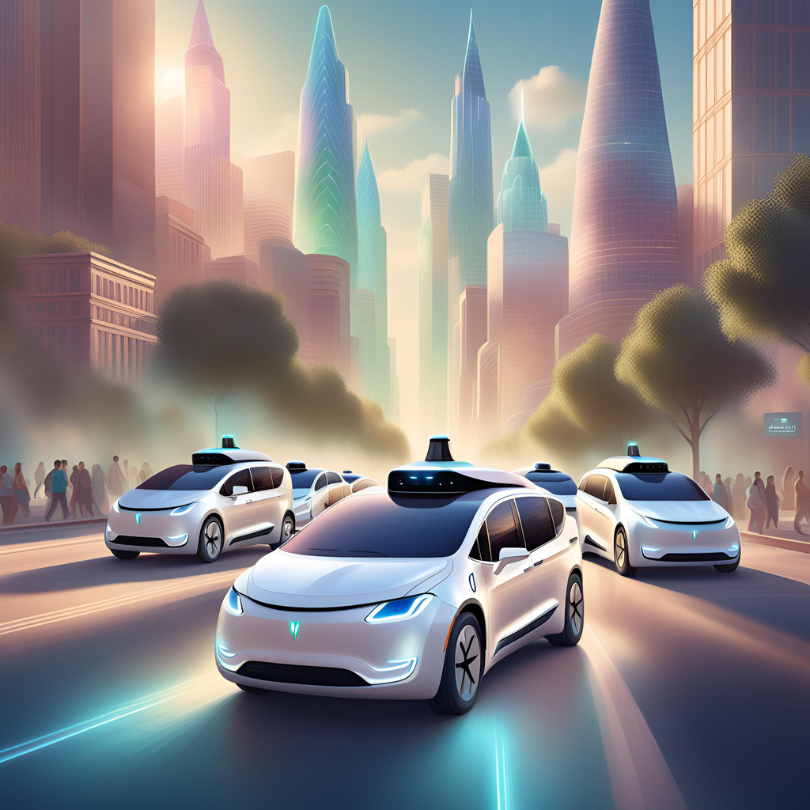The Future of Mobility: An In-Depth Look at Driverless Uber Technology
September 23, 2024

The transportation landscape is evolving at a staggering pace, driven by advancements in technology and a growing demand for sustainable, efficient, and safe mobility solutions. Among the major players in this transformation is Uber, a company that revolutionized the ride-hailing industry with its innovative platform. In recent years, Uber has embarked on an ambitious journey toward implementing driverless vehicles into its fleet. This blog post delves into the implications, challenges, and potential future of driverless Uber technology.
The Genesis of Driverless Technology in Ride-Hailing
Uber’s exploration of autonomous vehicles began as a response to several critical challenges faced by the ride-hailing industry. As urban populations swell, congestion and pollution have become pressing issues. Moreover, the high cost of human drivers leads to increased operational expenditures for companies like Uber. The solution, as envisioned by many, lies in autonomous driving technology — a prospect that promises not only to reduce costs but also to alleviate urban congestion and enhance road safety.
Uber officially announced its commitment to self-driving technology in 2015, a move that underscored its ambition to transition from a company reliant on human drivers to one that owns and operates a fleet of autonomous vehicles. Since then, Uber has invested billions of dollars in developing collaborations with leading technology firms, investing in research and testing, and acquiring startups that specialize in autonomous technology.
The Technology Behind Driverless Uber
The backbone of driverless technology lies in a complex interplay of hardware and software components. Autonomous vehicles, often referred to as self-driving cars, utilize a network of sensors, cameras, and artificial intelligence (AI) algorithms to navigate and understand their surroundings. LiDAR (Light Detection and Ranging) technology plays a crucial role in this, creating a 3D map of the environment by measuring distances using laser beams.
Uber has made significant investments in developing its proprietary self-driving system but has also partnered with technology firms to leverage their expertise. The integration of AI, machine learning, and advanced data analytics allows Uber’s autonomous vehicles to learn from countless scenarios, assess potential hazards, and make split-second decisions — equivalent to human drivers.
One notable aspect of this technology is the redundancy built into their systems. Safety remains paramount, and Uber’s autonomous vehicles are designed with multiple layers of fail-safes to ensure that if one system were to fail, others would continue to operate seamlessly. This redundancy is vital in real-world environments, where unpredictable factors can emerge at any moment.
Economic and Social Implications
The advent of driverless Uber applies not only to the company’s bottom line but also to broader economic and social factors. The potential reduction in operational costs is significant. Without the need to pay drivers, Uber could pass on some savings to consumers, making rides more affordable. Conversely, this raises concerns about job displacement. The gig economy, characterized by diversified jobs in transportation, delivery, and other sectors, could face upheaval as self-driving technology becomes more prevalent.
Moreover, the effect on urban infrastructure and public transportation systems could be profound. Autonomous vehicles could complement or even replace traditional public transport modes, offering on-demand services that enhance mobility and accessibility in underserved areas. Cities, in turn, could benefit from reduced traffic congestion and lower emissions, contributing to improved urban living conditions.
Safety Concerns and Regulatory Challenges
While the enthusiasm for driverless technology is palpable, safety concerns continue to loom large. High-profile accidents involving autonomous vehicles have raised questions about the reliability of the technology and its ability to handle complex driving situations. To address these concerns, regulatory bodies must establish stringent guidelines and regulatory frameworks that govern the testing and deployment of driverless vehicles.
Uber faces a daunting challenge in persuading both regulators and the public of the safety and efficacy of its autonomous fleet. Extensive pilot programs, transparency in testing, and collaboration with regulators are essential steps in building trust in the technology. Continuous monitoring and data-sharing will further bolster the case for self-driving cars, as evidence accumulates proving their safety over time.
The Road Ahead: A Future Powered by Autonomy
Looking to the future, the road to a fully autonomous Uber fleet is fraught with challenges yet filled with promise. As technology advances, the gradual integration of driverless cars into urban mobility ecosystems will likely proceed along a phased approach. Initial deployments may involve designated areas — urban corridors or geofenced regions — where the technology can be tested and optimized before broader rollout.
Additionally, strategic collaborations will be pivotal. By partnering with automotive manufacturers, technology startups, and regulatory bodies, Uber can enhance its technological capabilities while ensuring compliance with legal standards. The company’s commitment to innovation must remain steadfast as it navigates this complex landscape.
Conclusion: Embracing a New Paradigm of Mobility
Driverless Uber is not merely a technological innovation; it represents a paradigm shift in how we conceptualize mobility and transportation. The implications reach far beyond the confines of a single app or service. They encompass economic structures, urban planning, and etc. As Uber works diligently to bring autonomous driving technology to fruition, one thing is crystal clear — the future of transportation is likely to be driverless, and Uber aims to be at its forefront.
As we stand on the brink of this mobility revolution, collaboration, regulation, and safety will play crucial roles in determining the success of driverless rideshare services. With ongoing investments in technology, commitment to safety, and a vision for sustainable transportation. Uber is poised to redefine the way we traverse our cities, potentially leading us into a new era of travel that is efficient, safe, and effortlessly accessible.